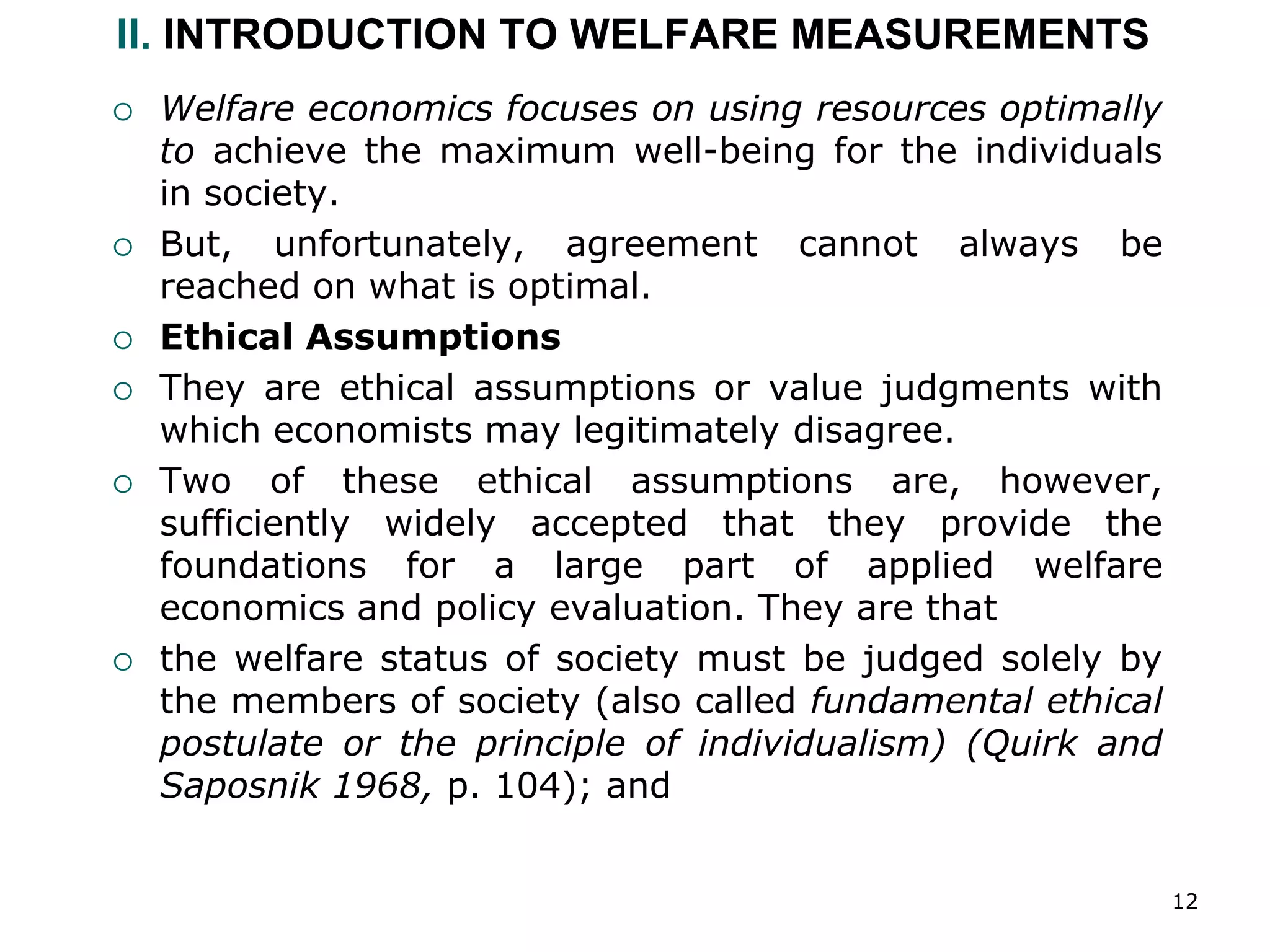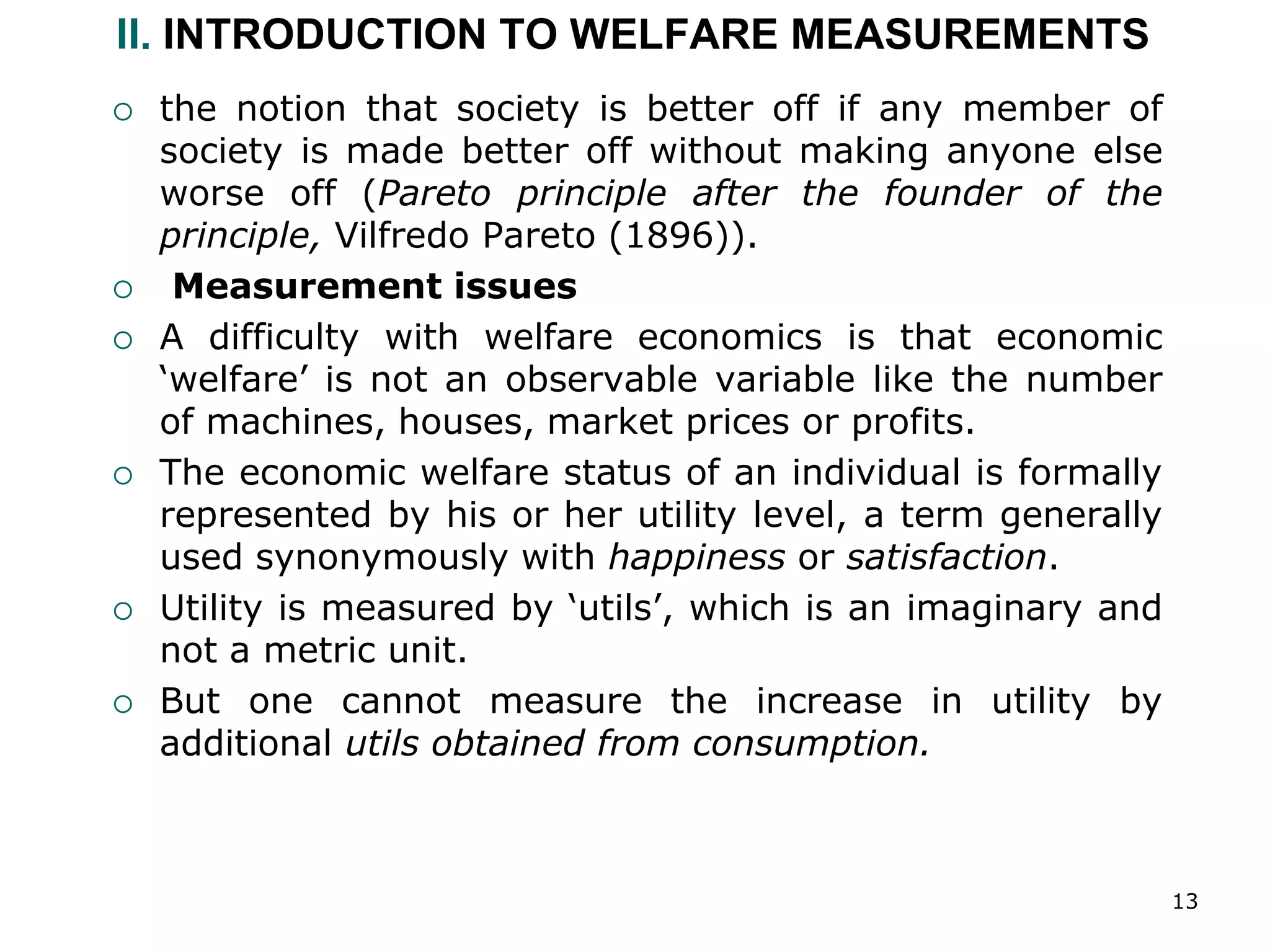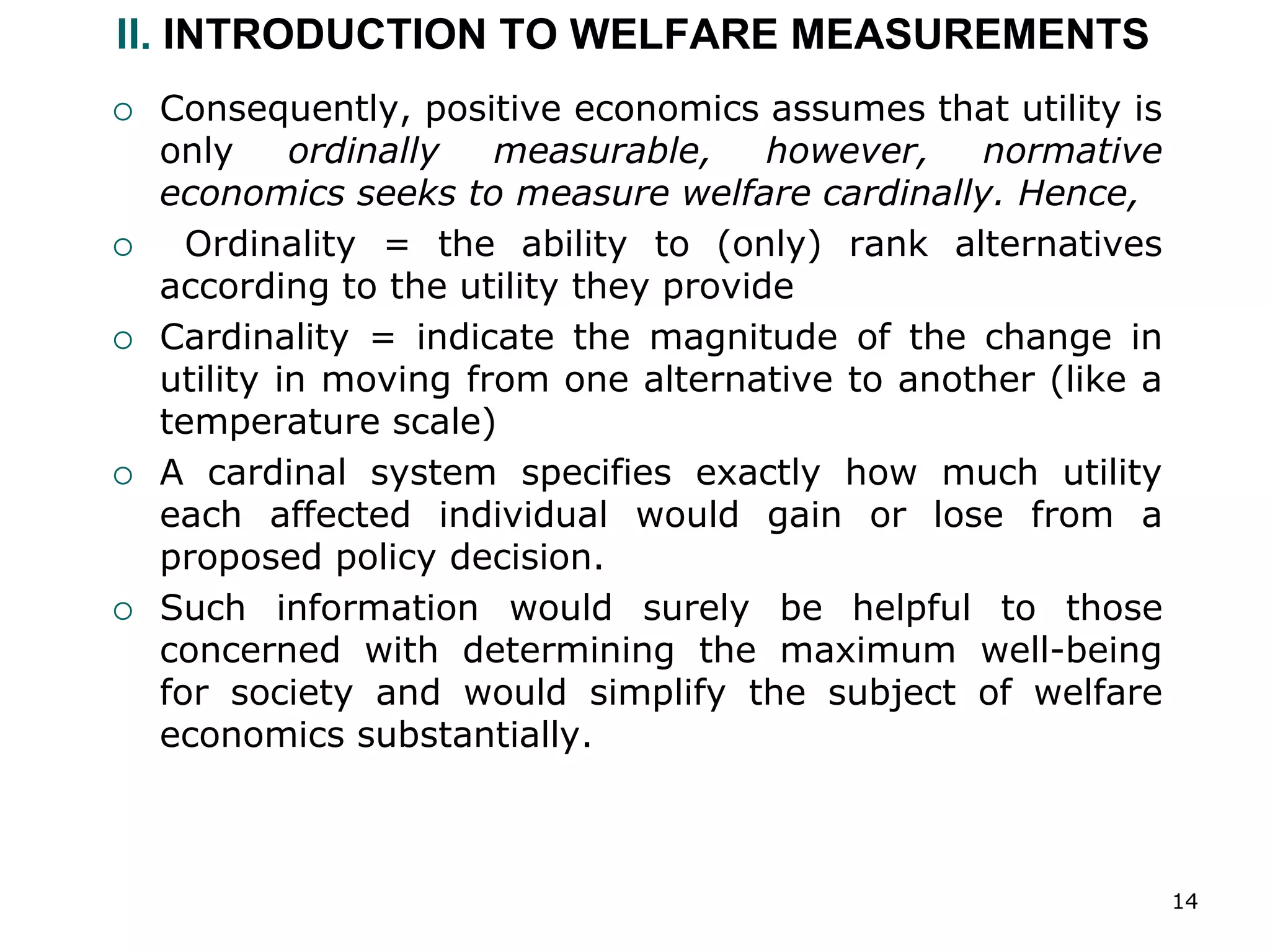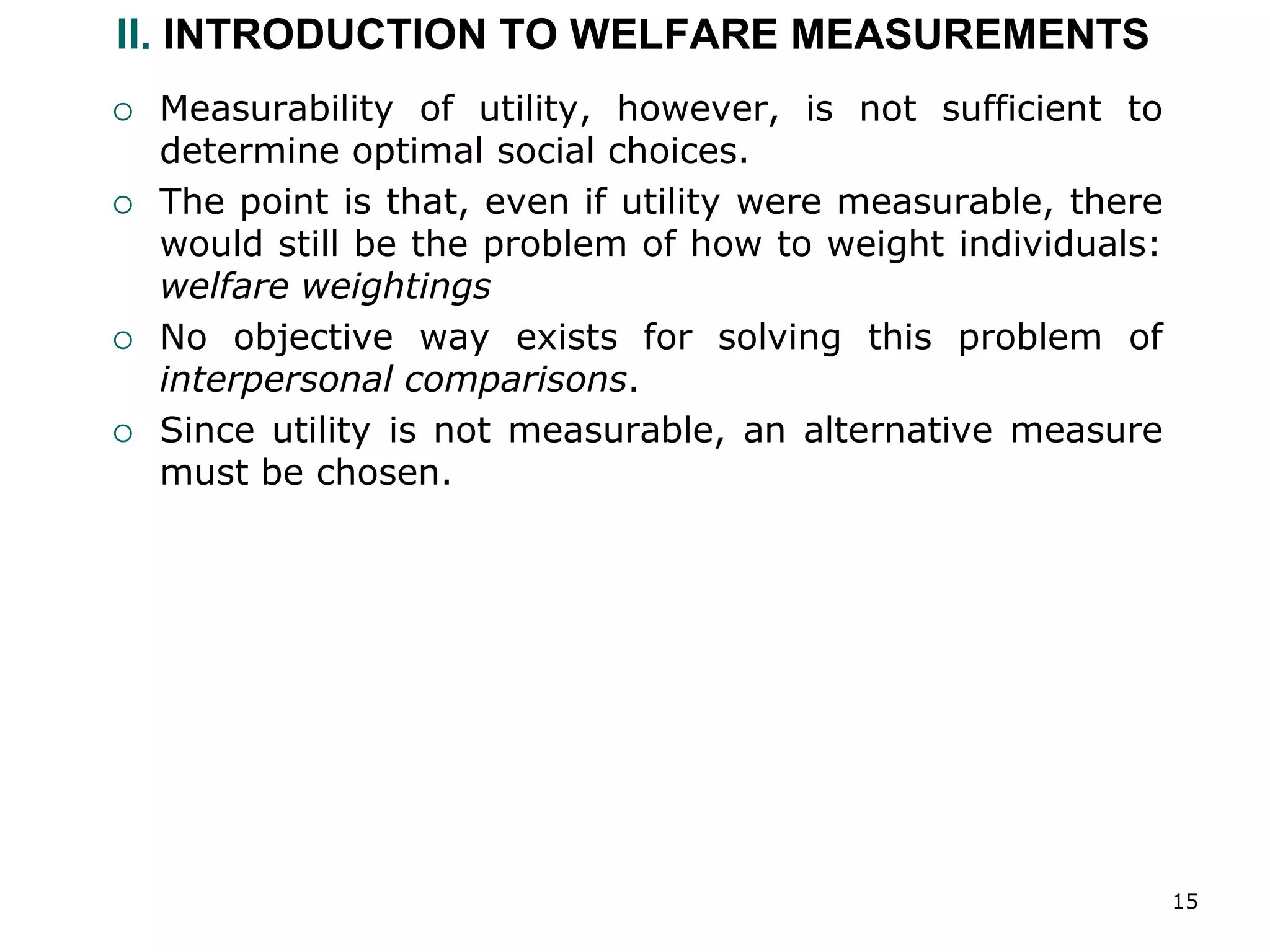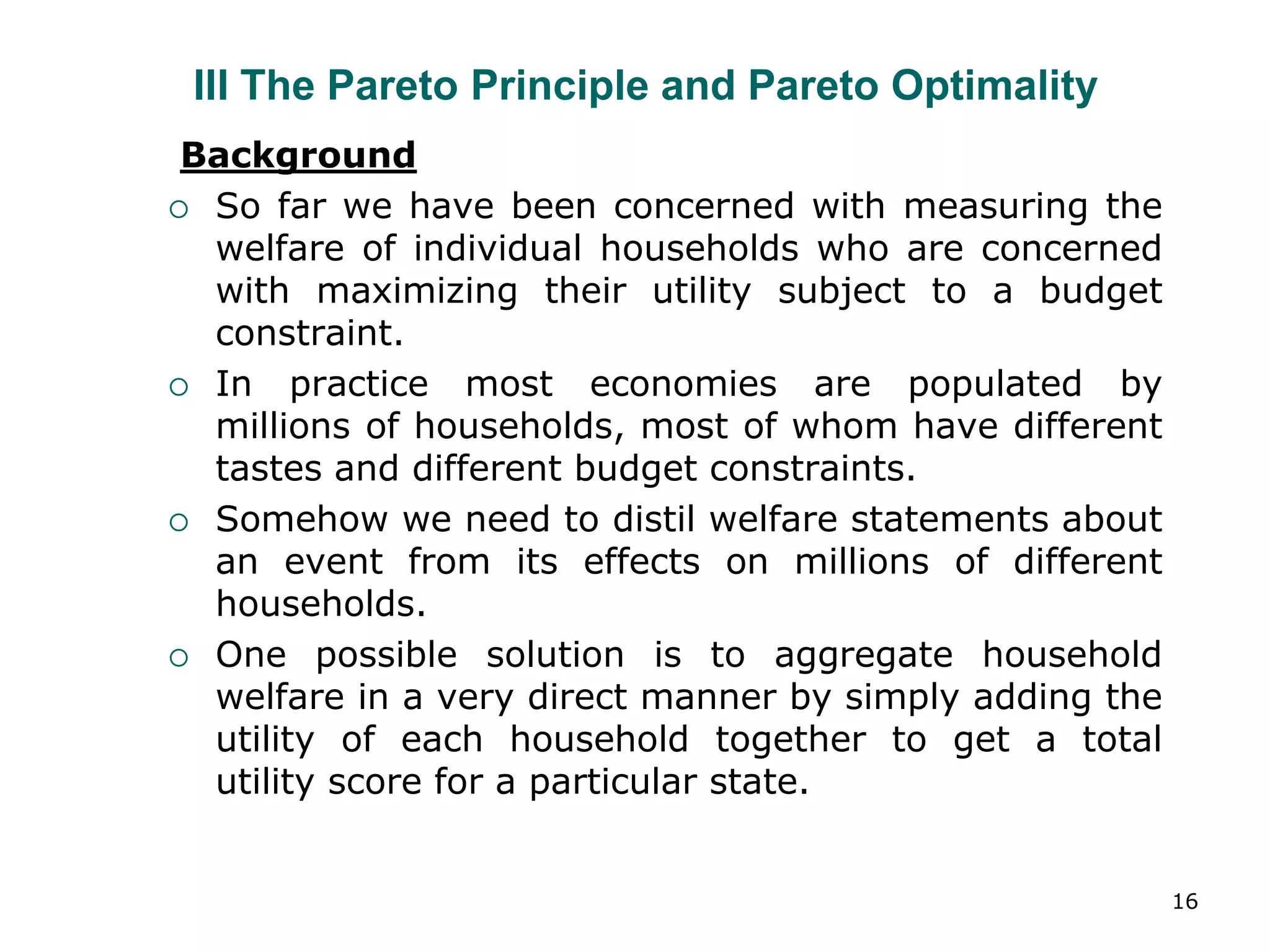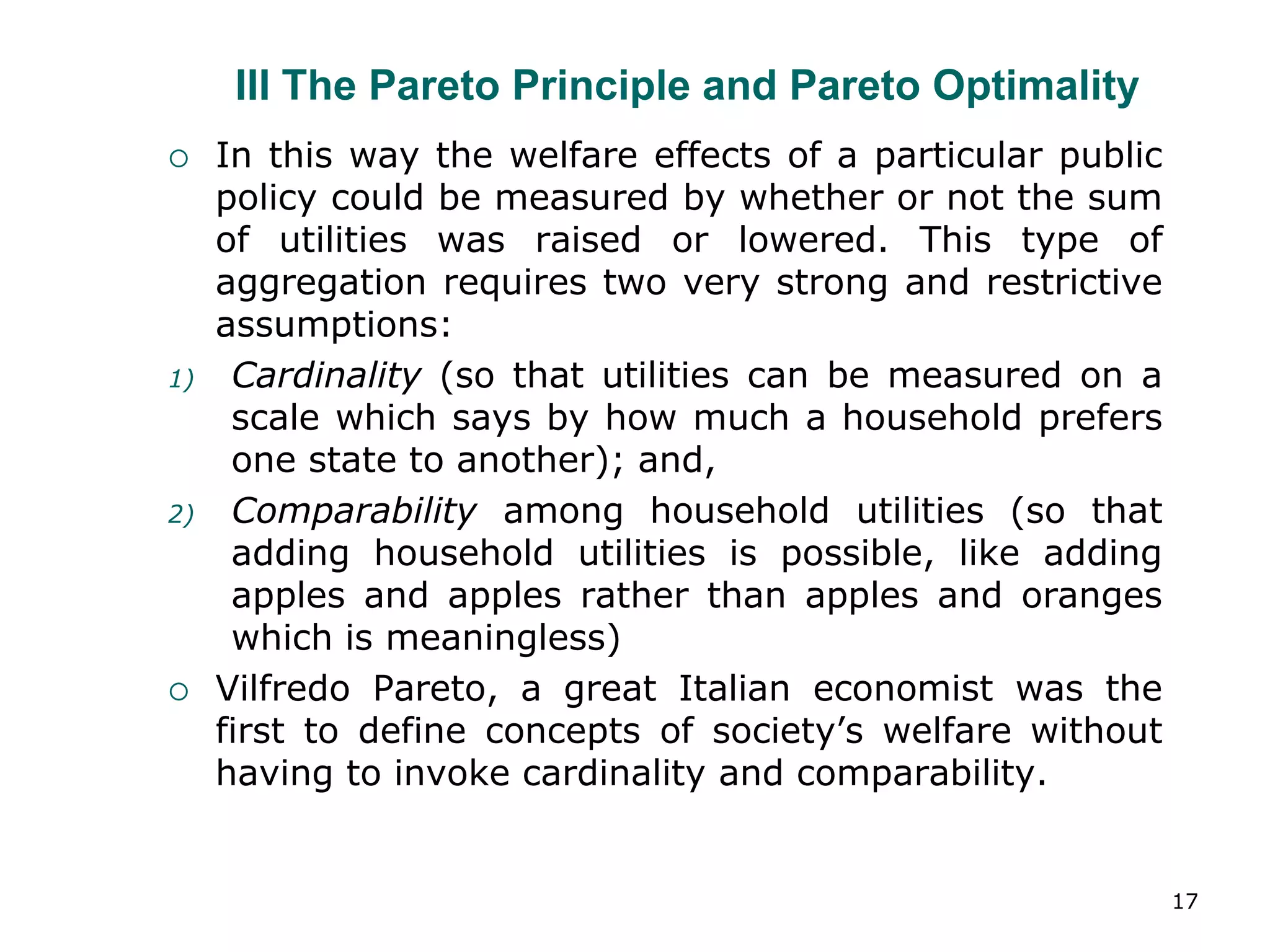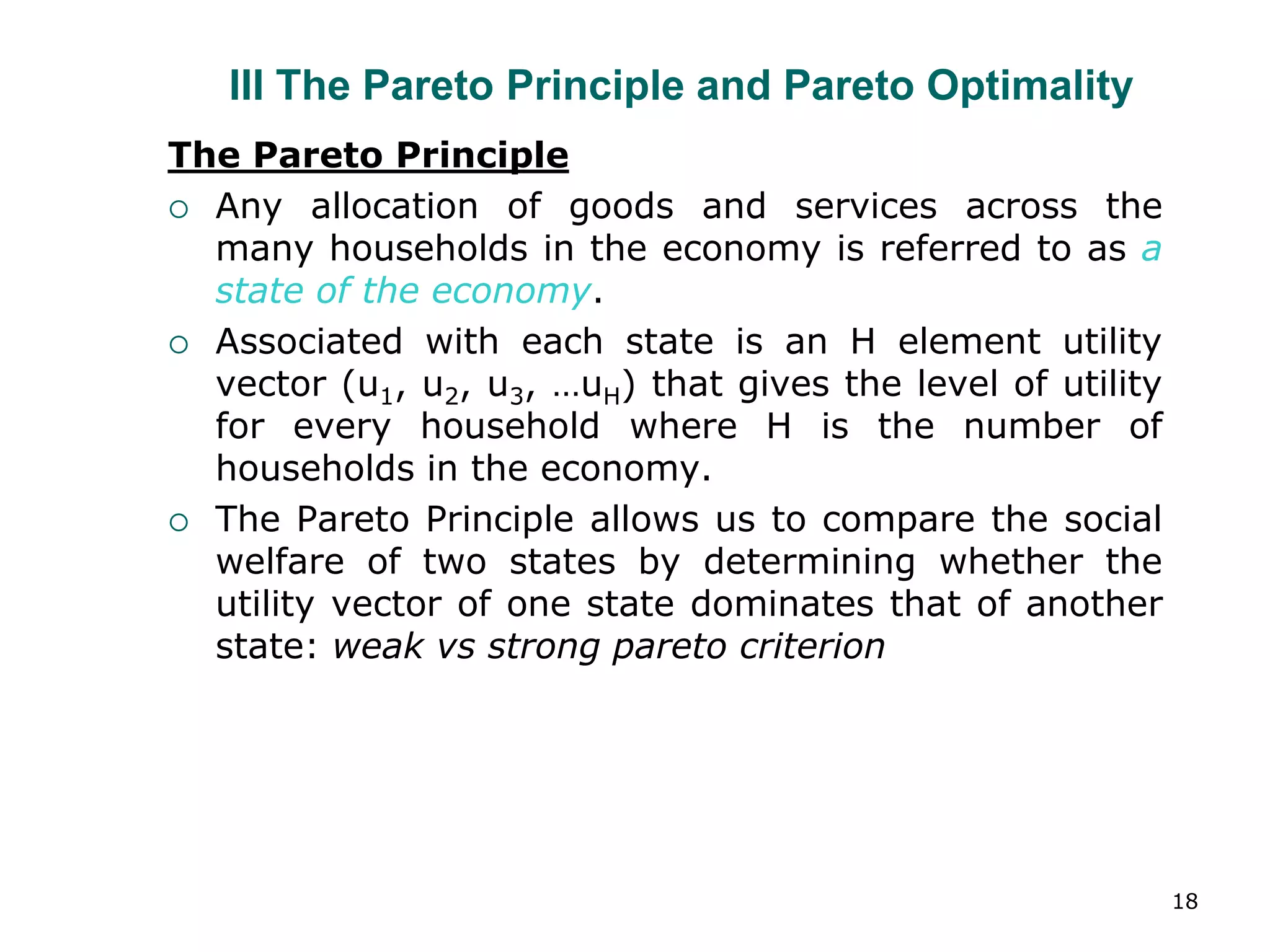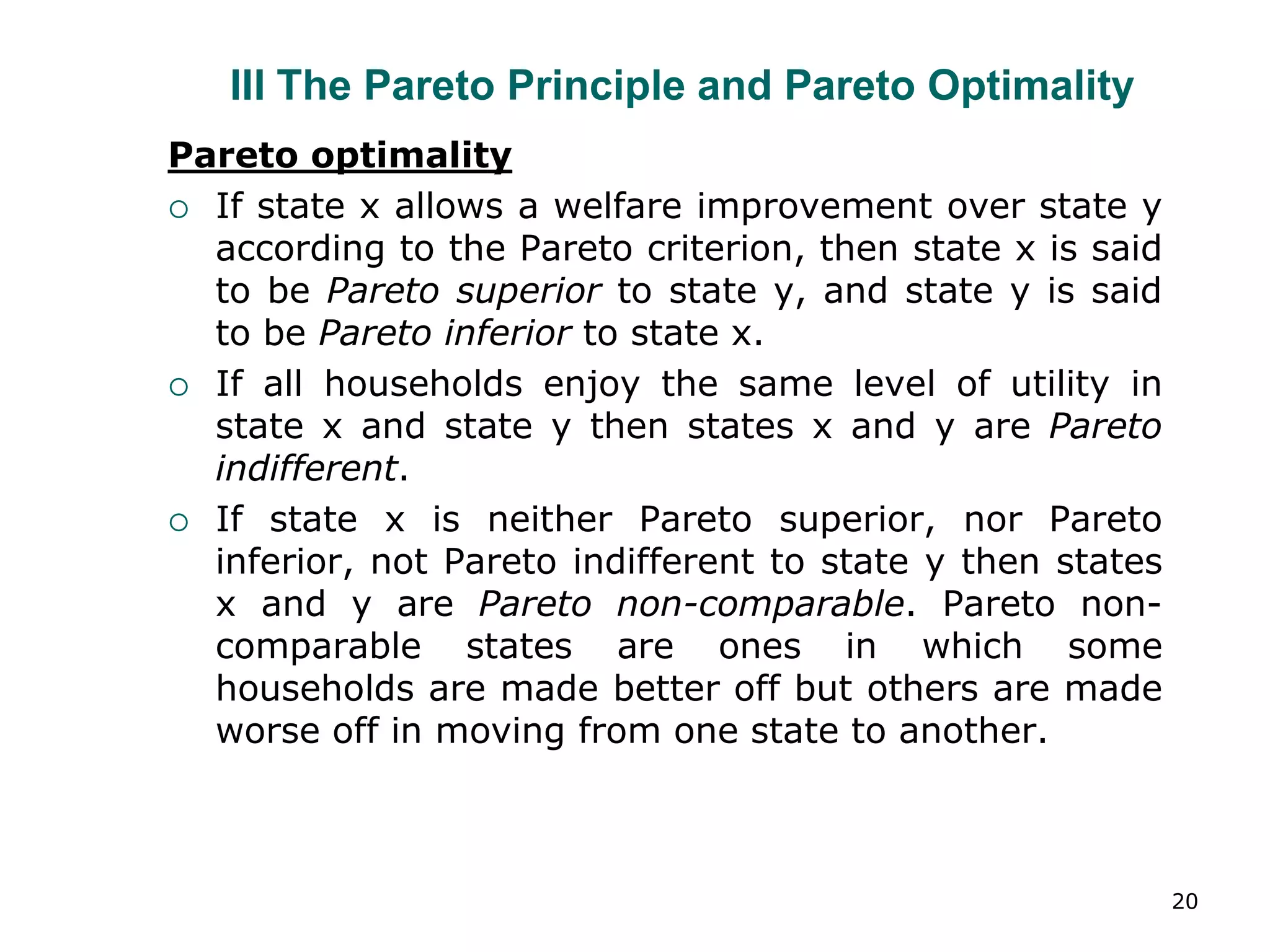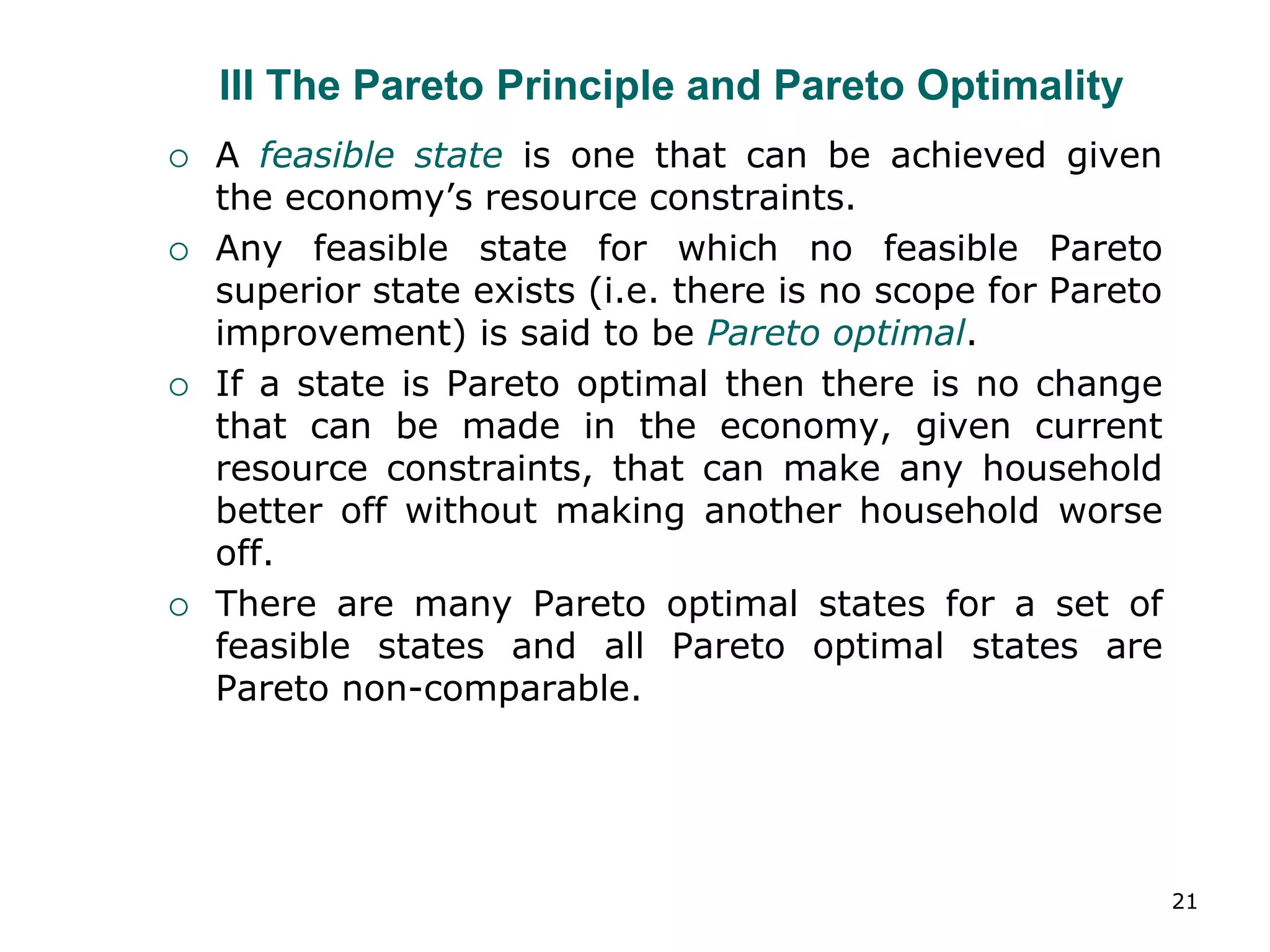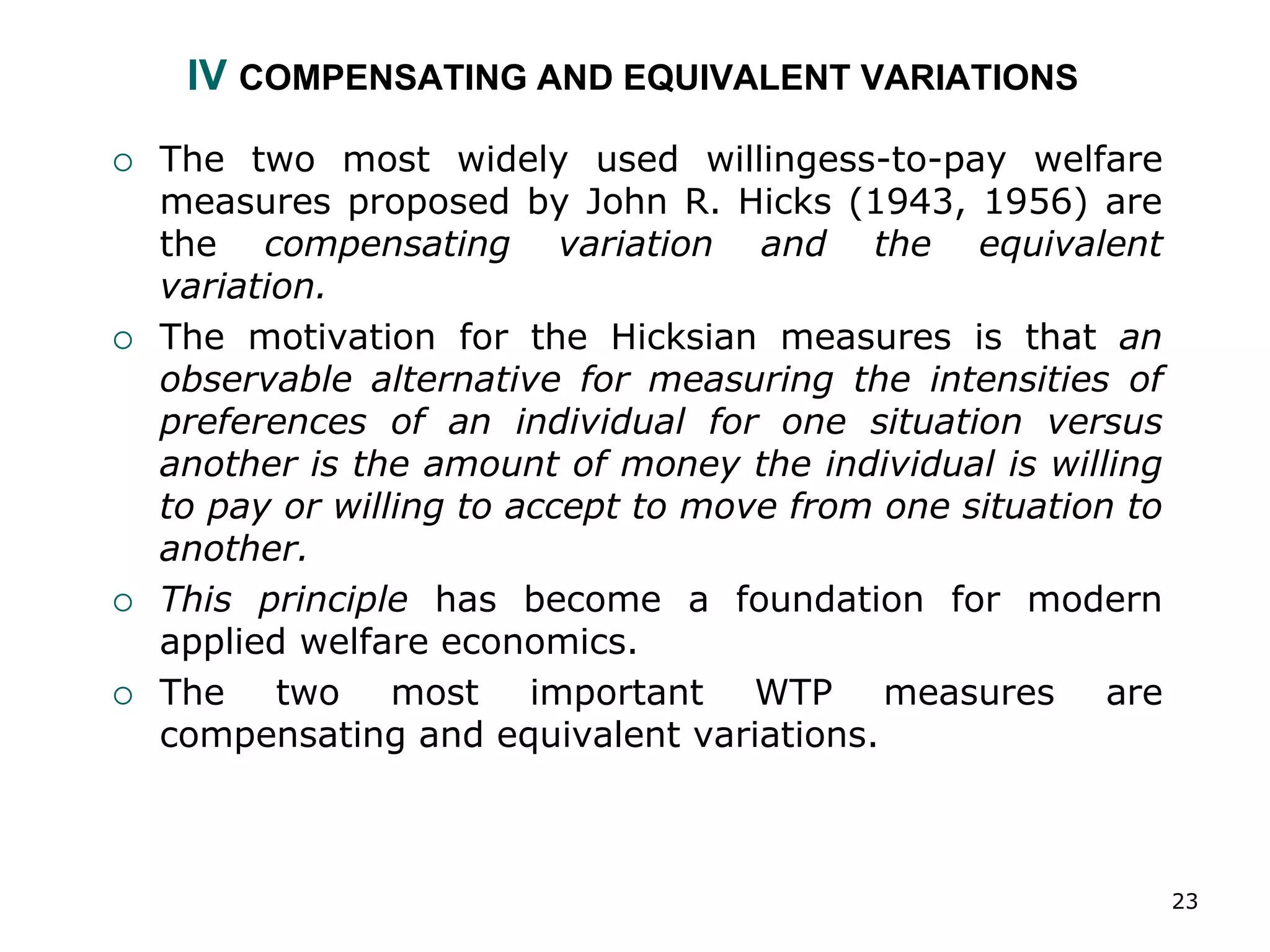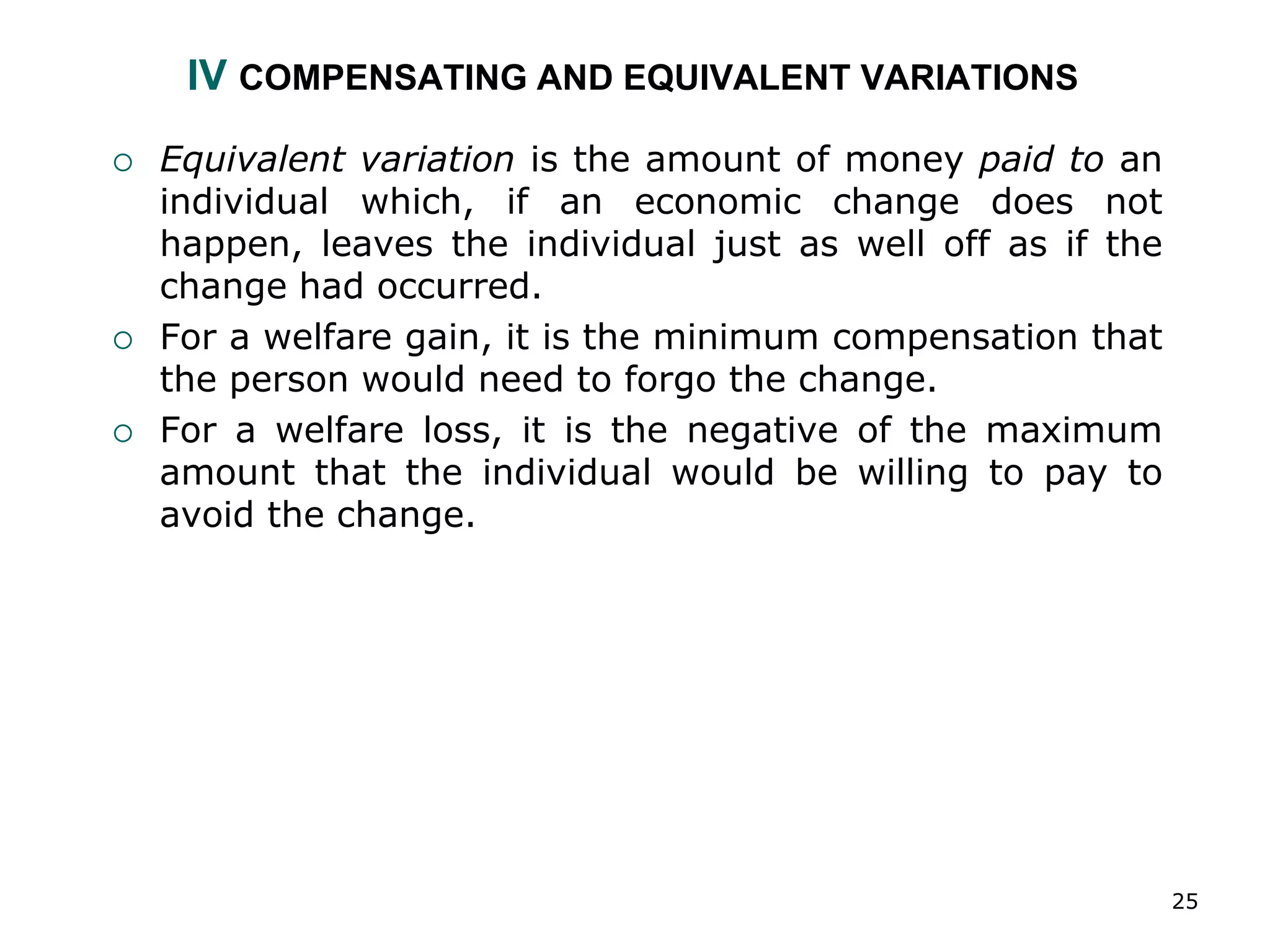This document provides an overview of welfare economics concepts, including:
1) It discusses how welfare depends on households' consumption bundles and preferences, using indifference curves and budget constraints.
2) Measuring utility is challenging since it is not directly observable, only ordinally measurable. Welfare economics uses the Pareto principle to compare states without cardinal utility measurements.
3) The Pareto principle states that a state is preferred if it makes at least one household better off without harming others (weak criterion) or makes some better off and none worse off (strong criterion).
4) A Pareto optimal state cannot be improved upon without making someone worse off. This allows welfare comparisons without interpersonal utility comparisons
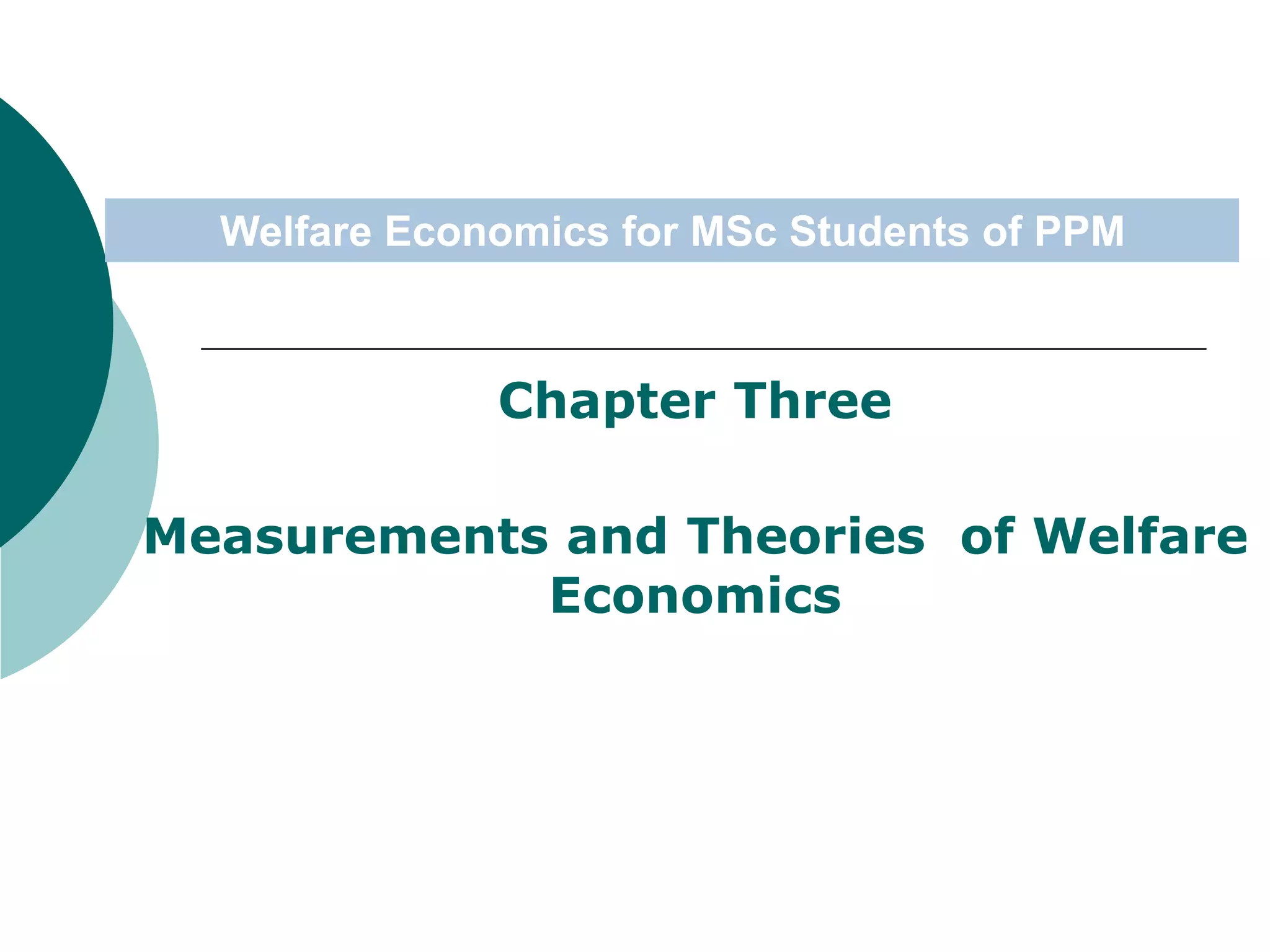
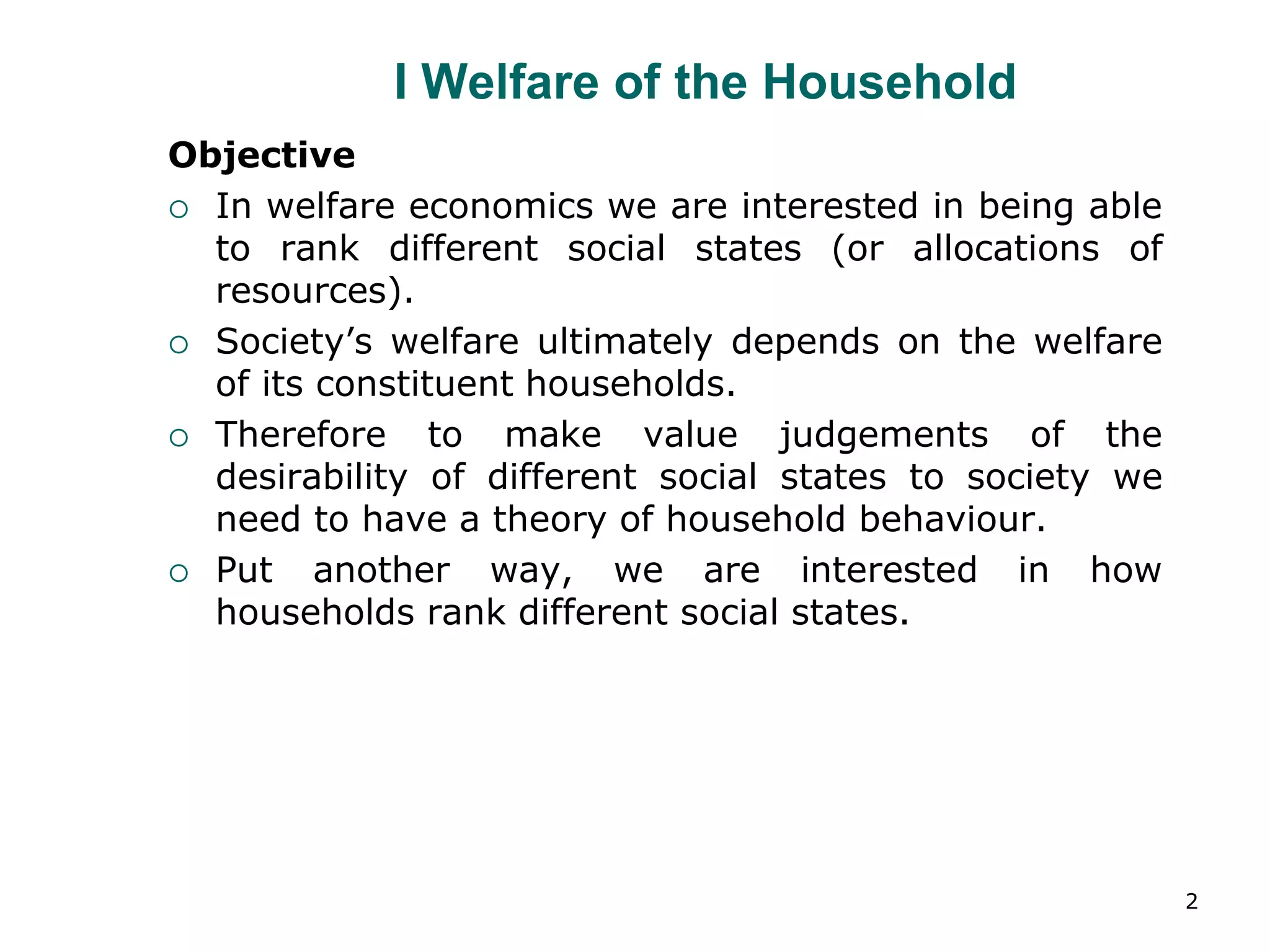

![4
Part I: Welfare of the Household
Preference orderings over alternative bundles of
commodities
Simple economic model = a household must choose
how to spend its income on different goods. This is
the household’s utility maximisation problem.
The household chooses among available bundles of
commodities on the basis of its preferences.
Commodity bundles
x = (x1, x2, …., xn ) [1]](https://image.slidesharecdn.com/chapter3final-221119221620-e69dd576/75/Chapter-3-Final-ppt-4-2048.jpg)
![5
I Welfare of the Household
Utility functions
The utility function depicts the relationship between
the level of satisfaction reached by a household and
the amounts of different commodities it consumes.
U = u(x1, x2, …., xn ) [2]
The utility function can be used to compare any
number of commodity bundles.
Indifference curves
Indifference curves provide a locus of points
representing combinations of two commodities (x1
and x2) between which the consumer is indifferent
(i.e. has equal utility).
There are an infinite number of indifference curves,
each corresponding to a given level of utility, and
they cannot intersect.](https://image.slidesharecdn.com/chapter3final-221119221620-e69dd576/75/Chapter-3-Final-ppt-5-2048.jpg)
![6
I Welfare of the Household
Marginal rate of substitution (MRS)
MRS is the amount of good y that must be given up
per unit of x gained if the consumer is to remain at
the same level of utility
MRS is equal to the slope of the indifference curve
at any one point
Algebraically, MRS = [3]
Convexity of indifference curves represents a
diminishing MRS
dx
dy
](https://image.slidesharecdn.com/chapter3final-221119221620-e69dd576/75/Chapter-3-Final-ppt-6-2048.jpg)
![7
I Welfare of the Household
The budget set and budget constraint
A household receives an income y and faces a set of
prices p for commodities given by
p = p(p1, p2, …., pn ) [4]
for each good x = (x1, x2, …., xn )
The budget constraint is given by
[5]
The budget set is the set of different bundles that it
is feasible to consume so that
[6]
y
x
p
n
i
i
i
1
y
x
p
n
1
i
i
i
](https://image.slidesharecdn.com/chapter3final-221119221620-e69dd576/75/Chapter-3-Final-ppt-7-2048.jpg)
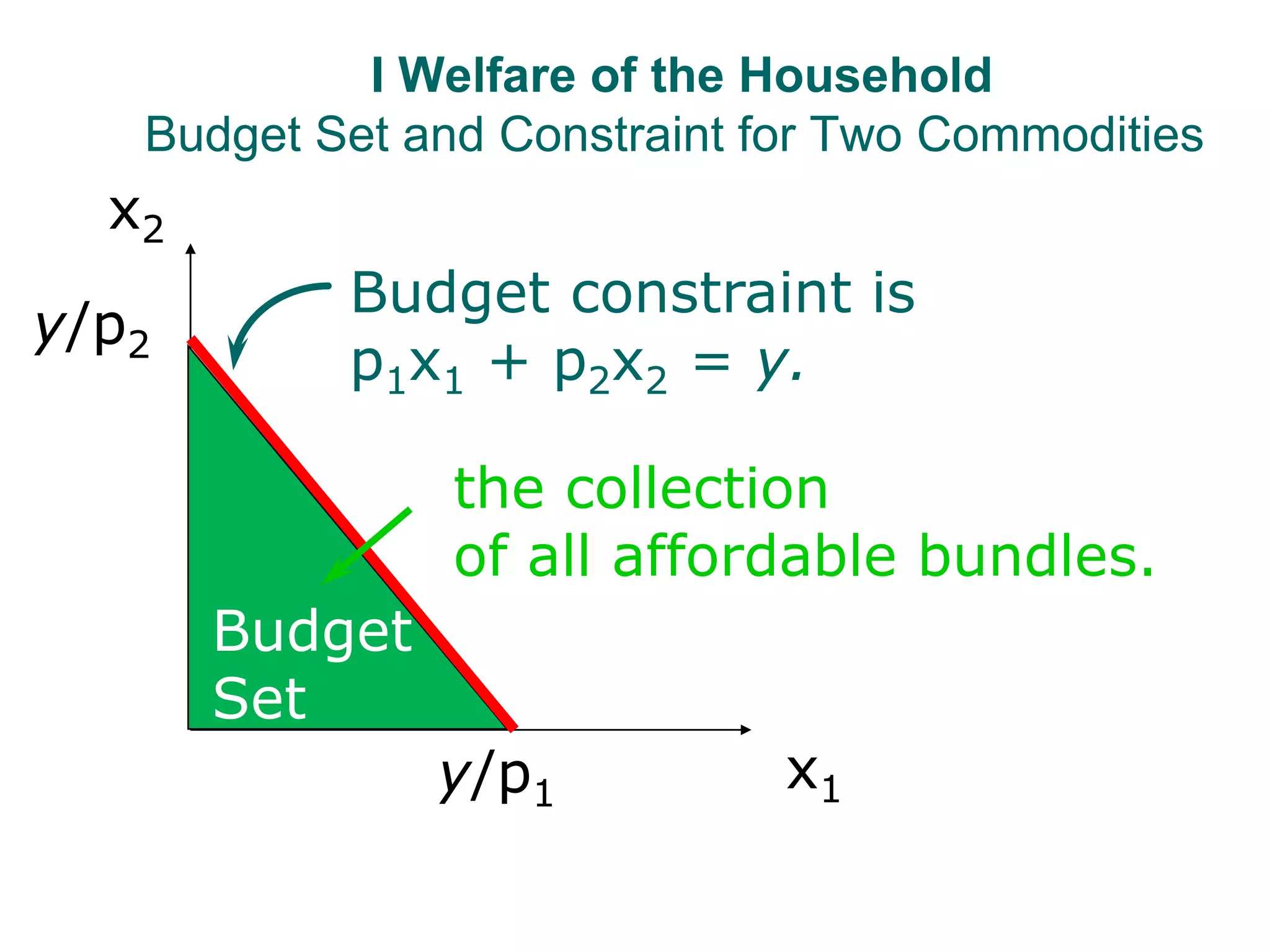
![9
I Welfare of the Household
A formal statement of the utility maximisation
problem
Maximise U = u(x1, x2, …., xn ) [7]
Subject to
The solution to the utility maximisation problem
requires that the MRS between goods must equal
their price ratio. E.g.
MRS = [8]
y
x
p
n
1
i
i
i
1
2
dx
dx
2
1
p
p
](https://image.slidesharecdn.com/chapter3final-221119221620-e69dd576/75/Chapter-3-Final-ppt-9-2048.jpg)
![10
I Welfare of the Household
The demand function
Each time the budget constraint changes (due to
changes in prices or incomes) there will be a new
equilibrium. This can be used to derive a relationship
between the optimum amount of a good purchased
(i.e. quantity demanded) and prices and income.
The demand function is given by
xi = x(p1, p2, …, pn, y) [9]
The demand function can be thought of as the
solution to the household utility maximisation
problem.
Given the prices and income facing the household
the demand functions determine the bundles of
goods that yield the highest value of the utility
function.](https://image.slidesharecdn.com/chapter3final-221119221620-e69dd576/75/Chapter-3-Final-ppt-10-2048.jpg)
![11
I Welfare of the Household
The indirect utility function
If those demand functions are substituted into the
utility function, the results is the indirect utility
function, which shows the maximum utility that can
be achieved for any set of prices and income.
v(p, y) = v[x1(p, y), x2(p, y), …., xn(p, y)] [10]](https://image.slidesharecdn.com/chapter3final-221119221620-e69dd576/75/Chapter-3-Final-ppt-11-2048.jpg)
